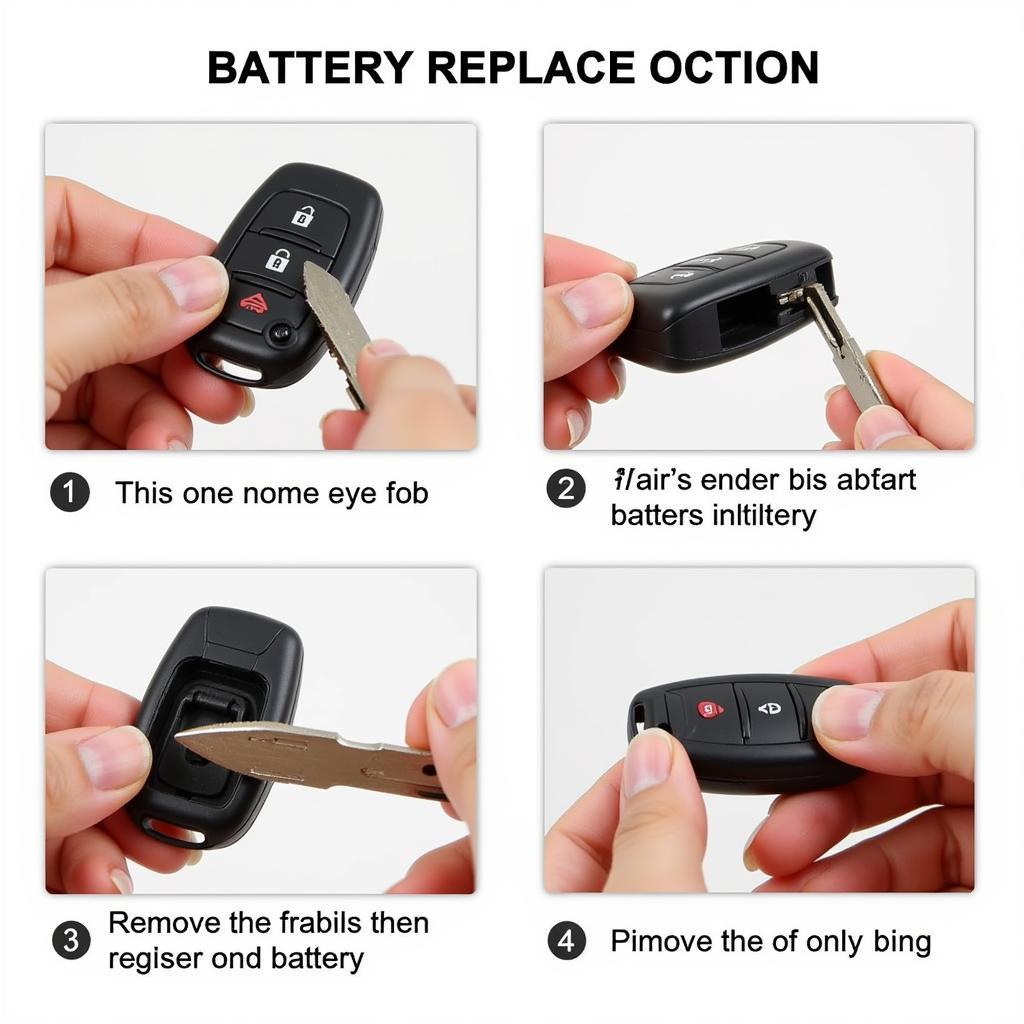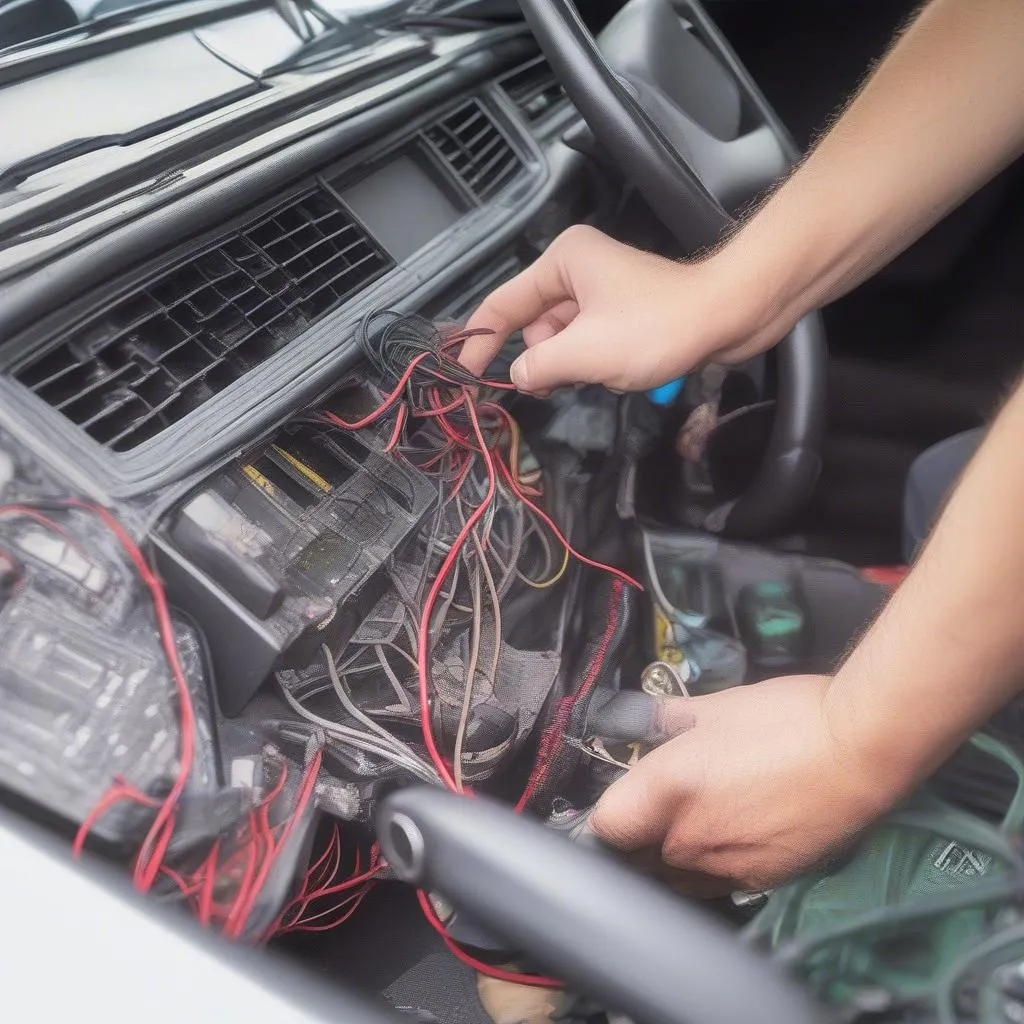Adding a CB radio to your vehicle can be a great way to stay connected with other drivers, especially for those who frequently travel long distances, participate in off-road adventures, or simply want to stay informed about traffic and road conditions. While the process might seem daunting, this guide will provide a step-by-step walkthrough to help you successfully install a CB radio in your car.
Choosing the Right CB Radio and Accessories
Before diving into the installation process, it’s crucial to select the right CB radio and necessary accessories for your needs.
Types of CB Radios
CB radios are available in various forms, each with pros and cons:
- Full-Size CB Radios: These traditional radios offer the most power and features, making them suitable for experienced users and those seeking maximum range.
- Compact CB Radios: Ideal for smaller vehicles, compact radios provide a balance of features and portability without compromising performance.
- Handheld CB Radios: As the most portable option, handheld radios offer convenience but typically have limited range and features.
Essential Accessories
Besides the CB radio itself, you’ll need these accessories:
- Antenna: The antenna transmits and receives signals, directly impacting the radio’s range. Popular choices include whip antennas, fiberglass antennas, and magnetic mount antennas.
- Antenna Mount: Depending on the antenna type, you’ll need a suitable mount to secure it to your vehicle. Common options include fender mounts, mirror mounts, and trunk lid mounts.
- Coaxial Cable: This cable connects the antenna to the CB radio, transmitting signals between them. Choose a high-quality cable with low signal loss for optimal performance.
- Power Cable: This cable connects the CB radio to your vehicle’s electrical system. Ensure it has an inline fuse for protection.
- SWR Meter (Optional): This tool helps you fine-tune the antenna for optimal signal transmission and reception.
Planning Your Installation
Before starting the installation, take some time to plan the placement of your CB radio and antenna.
Choosing the Right Location for Your CB Radio
Consider these factors when deciding where to install your CB radio:
- Accessibility: Ensure the radio is within easy reach for adjustments and channel changes while driving.
- Visibility: Position the radio so you can easily see the display and controls without obstructing your view of the road.
- Convenience: Choose a location that allows for easy routing of cables and connections to the vehicle’s electrical system.
Finding the Optimal Antenna Placement
Antenna placement significantly affects performance. Ideally, install the antenna as high as possible on your vehicle for maximum range.
Here are some popular antenna mounting locations:
- Roof Mount: This location offers the highest mounting point, resulting in the best possible range. However, it may require drilling holes in your vehicle’s roof.
- Trunk Lid Mount: Provides good ground plane and easy access for adjustments. It’s also less conspicuous than roof mounts.
- Fender Mount: Offers a good compromise between range and ease of installation. However, signal strength might be slightly lower compared to roof or trunk lid mounts.
Installing Your CB Radio
With the planning phase complete, you can now begin the installation process.
Step 1: Disconnect the Vehicle’s Battery
Before working on any electrical components, disconnect the negative terminal of your vehicle’s battery as a safety precaution.
Step 2: Mount the CB Radio
Depending on the radio type and your chosen location, use the provided mounting bracket to secure the CB radio to your vehicle’s dashboard or center console. Ensure it’s firmly in place to prevent vibrations and movement while driving.
Step 3: Install the Antenna
Following the manufacturer’s instructions, assemble and install the antenna to the chosen mounting location. If drilling is required, take necessary precautions to prevent damage to your vehicle’s body.
Step 4: Route the Coaxial Cable
Carefully route the coaxial cable from the antenna to the location of the CB radio, avoiding sharp bends or kinks. Use cable ties or clips to secure the cable and prevent it from interfering with other vehicle components.
Step 5: Connect the Cables
Connect the coaxial cable to the antenna and CB radio, ensuring a secure and proper connection. Next, connect the power cable to the CB radio and route it to the vehicle’s fuse box or a suitable power source.
Step 6: Connect to Power
Connect the positive wire of the power cable to a fused accessory circuit in the fuse box. Connect the negative wire to a suitable ground point on the vehicle’s chassis.
Step 7: Reconnect the Battery
With all connections made, reconnect the negative terminal of the vehicle’s battery.
Tuning Your CB Radio Antenna
After installing the CB radio and antenna, it’s crucial to tune the antenna using an SWR meter for optimal performance.
Step 1: Connect the SWR Meter
Connect the SWR meter to the antenna cable and the CB radio, following the manufacturer’s instructions.
Step 2: Tune the Antenna
Switch the CB radio to channel 1 and set the SWR meter to the “FWD” or “Calibrate” position. Key the microphone and adjust the antenna length or loading coil (if applicable) until the SWR reading is as close to 1:1 as possible.
Step 3: Repeat for Other Channels
Repeat the tuning process on channels 19 and 40, adjusting the antenna as needed to achieve the lowest possible SWR readings across all channels.
Conclusion
Installing a CB radio in your car is an achievable DIY project that can enhance your driving experience. By carefully following these steps and choosing the right equipment, you can enjoy the benefits of clear communication on the road. Remember to adhere to all local laws and regulations regarding CB radio use. If you’re uncomfortable with any part of the installation process, consult a professional installer for assistance.


